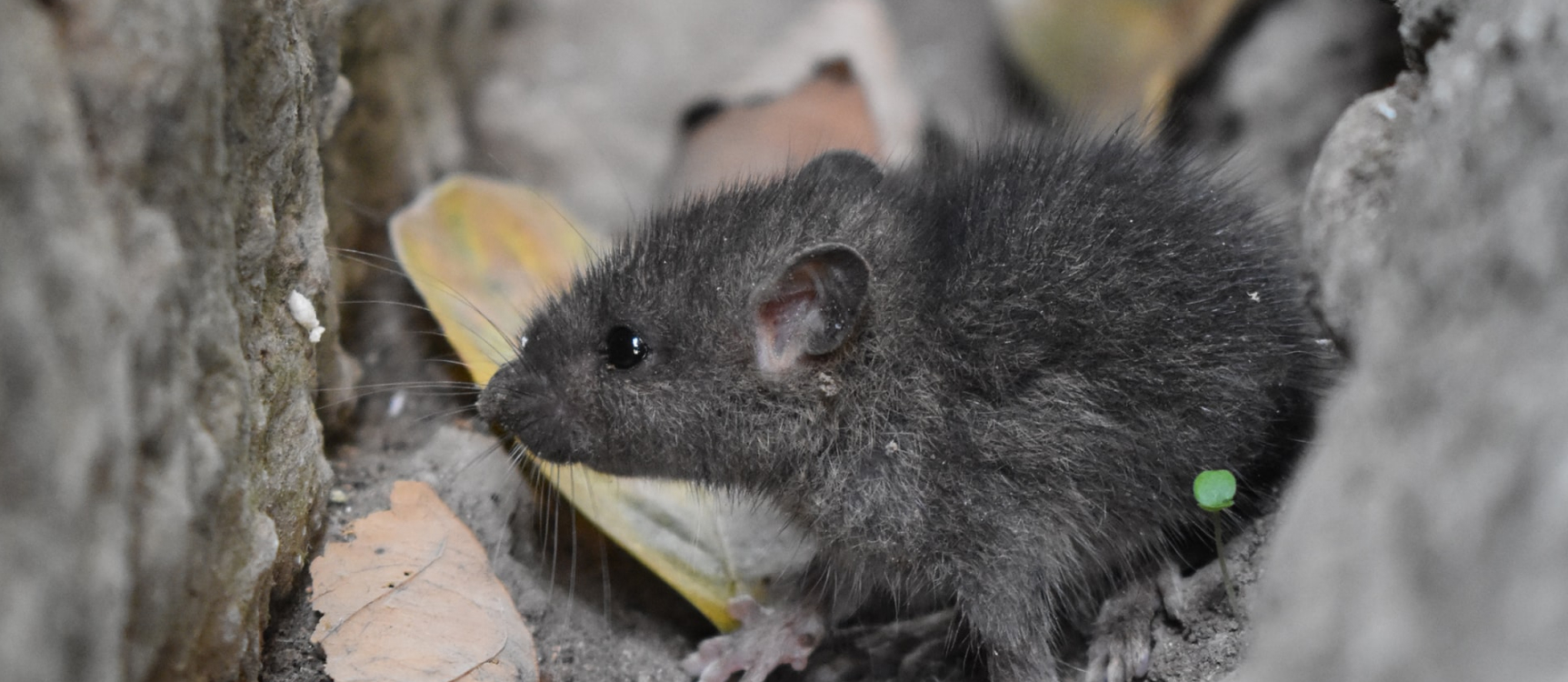Pest Info /
Rodents
Mice
The house mouse is everything you'd expect a mouse to be - small (2 to 3 inches), gray-brown with an almost naked tail as long (or longer) than its body and weighing less than an ounce.
These creatures prefer life indoors, preferring the comfort of niches between walls and behind cabinets and appliances. They possess a very prolific reproductive system, breeding year round and having as many as eight litters annually. Females can start having their litters at the age of one-and-a-half to two months. Life expectancy for a wild mouse is no more than one year.
They will eat anything from seeds, grains and nuts requiring only about 1/10 of an ounce of food each day, and can live without access to fresh water as long as their solid food is fairly moist.
Disease
Mice can carry a wide variety of diseases transmissible to humans. A very real problem with the infestation of mice is the Hantavirus which has been a threat in the south-western part of the country. Another major concern is salmonellosis which is transmitted by mice and is a concern in food storage and preparation areas.
Roof Rats
Roof rats will nest in attics, trees, and overgrown shrubbery or vines. Residential or industrial areas with mature landscaping are good habitats as is riparian vegetation of riverbanks and streams. Roof rats prefer to nest in locations off the ground and rarely dig burrows for living quarters if off-the-ground sites exist.
Roof rats eat a wide variety of foods, but they prefer fruits, nuts, berries, slugs, and snails. Roof rats are especially fond of avocados and citrus, and they often eat fruit that is still on the tree. Roof rats routinely travel up to 300 feet for food. They can live in the landscaping of one residence and feed at another.
They often can be seen at night running along overhead utility lines or fence tops. They have an excellent sense of balance and use their long tails to steady themselves while traveling along overhead utility lines. They move faster than Norway rats and are very agile climbers, which enables them to quickly escape predators.
The average number of litters a female roof rat has per year depends on many factors, but generally it is 3 to 5 with 5 to 8 young in each litter.
Norway Rats
The average female Norway rat has 4 to 6 litters per year and can successfully wean 20 or more offspring annually. They eat a wide variety of food but mostly prefer cereal grains, meats, fish, nuts, and some fruits.
When searching for food and water, Norway rats usually travel an area of about 100 to 150 feet in diameter. They are able to travel about 300 feet from their burrows or nests but only rarely.
Damages Caused by Rats
Rats eat and contaminate foodstuffs and animal feed. They also damage containers and packaging materials in which foods and feed are stored. Both rat species cause problems by gnawing on electrical wires and wooden structures such as doors, ledges, corners, and wall material, and they tear up insulation in walls and ceilings for nesting.
Norway rats can undermine building foundations and slabs with their burrowing activities and can gnaw on all types of materials, including soft metals such as copper and lead, as well as plastic and wood. If roof rats are living in the attic of a residence, they can cause considerable damage with their gnawing and nest-building activities. They also damage garden crops and ornamental plantings.
Among the diseases rats can transmit to humans or livestock are murine typhus, leptospirosis, salmonellosis (food poisoning), and rat-bite fever. Plague is a disease that both Roof and Norway rats can carry, but in California it is more commonly associated with ground squirrels, chipmunks, and native wood rats.
Copyright © 2012-2021 BumbleBee Pest Control Pty Ltd (ABN: 63 154 998 937)
